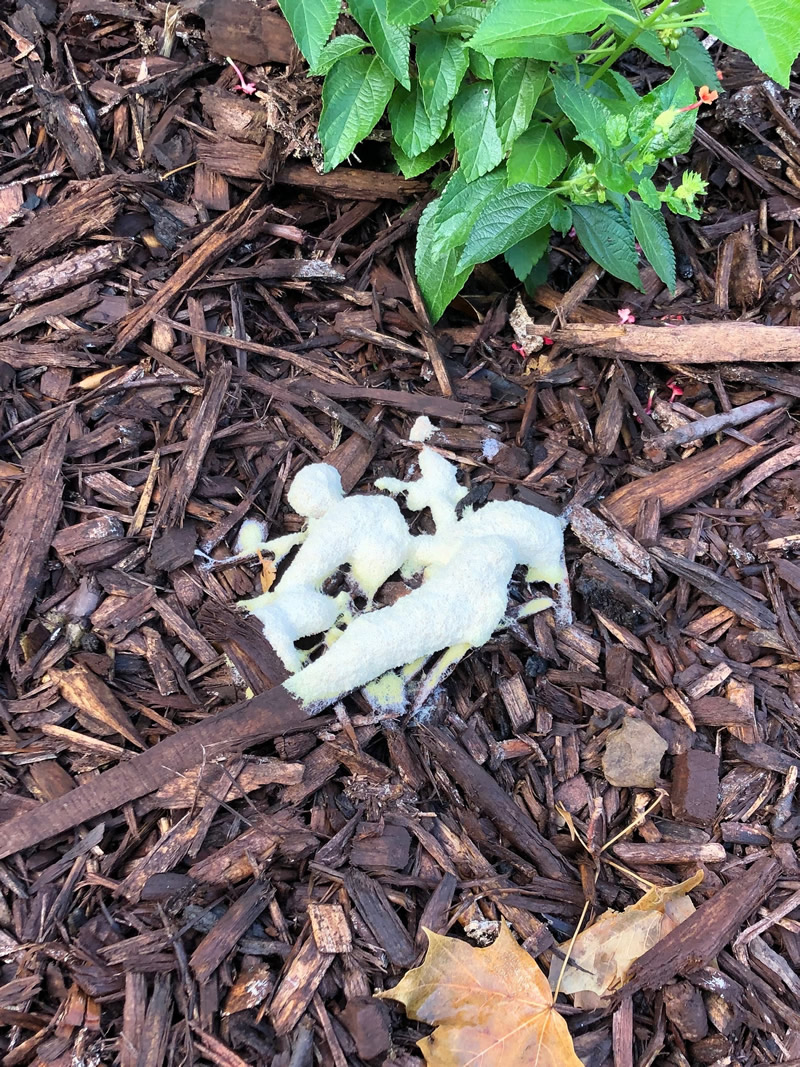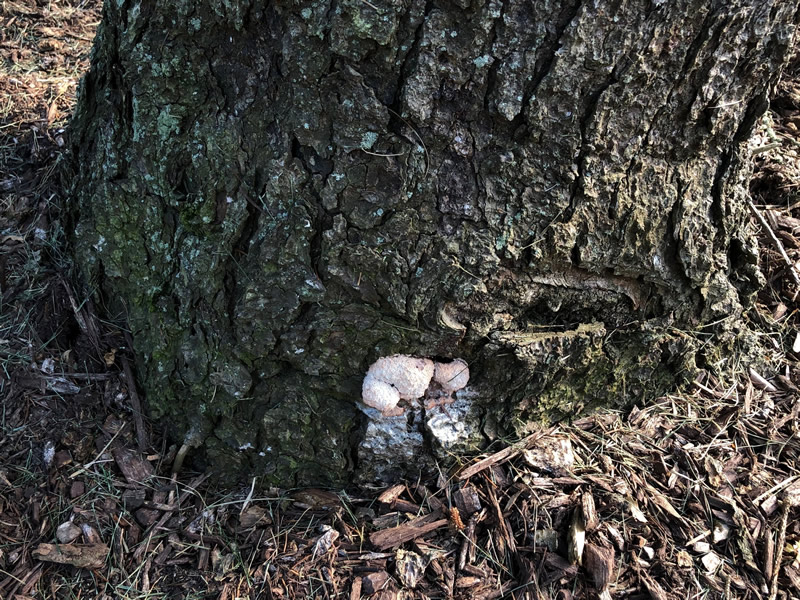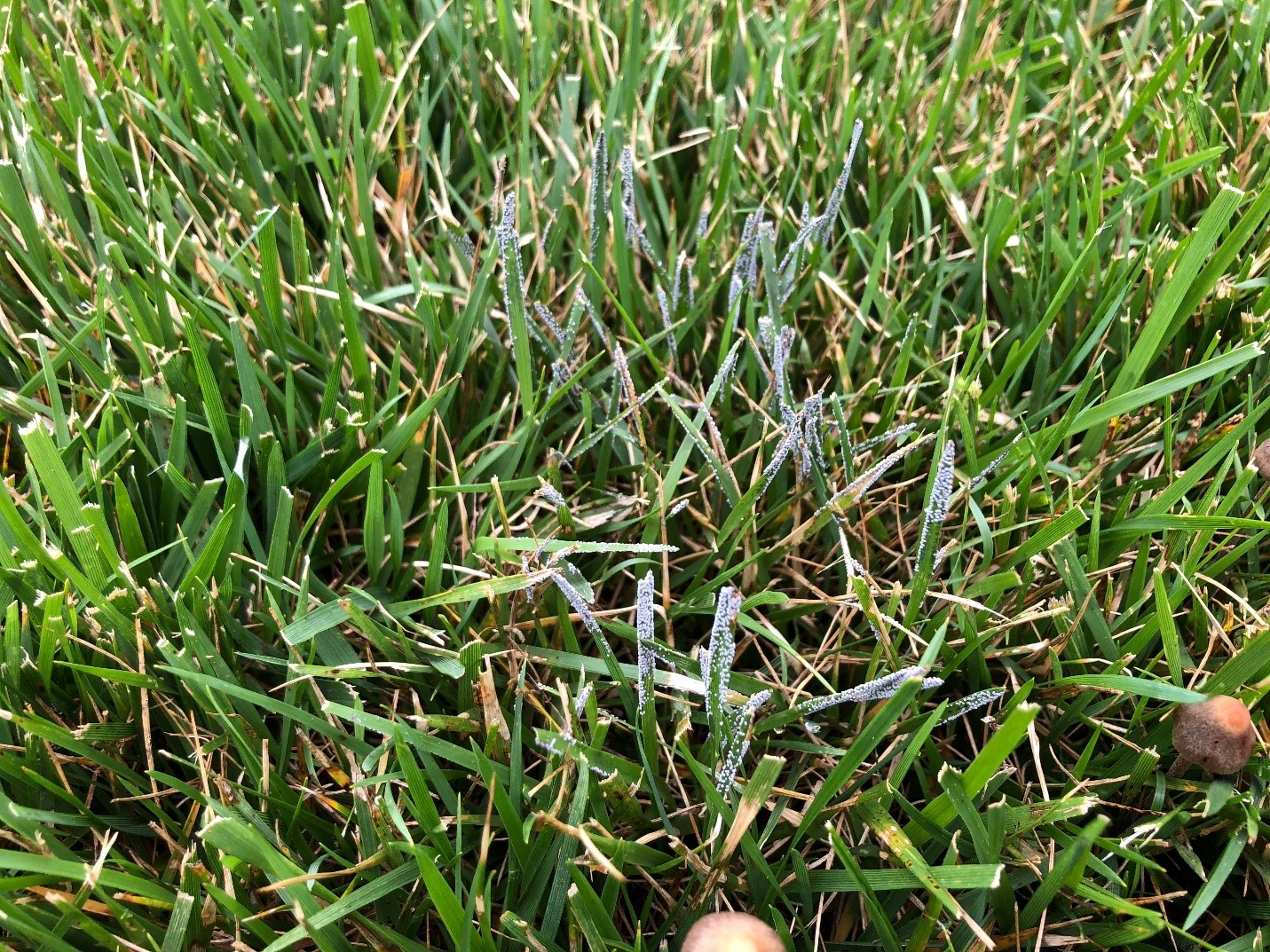Issue 7, July 15, 2019
Slime Molds
Warm, wet weather has stimulated the development of slime molds on mulch, turfgrass, and other surfaces. Slime molds can appear in many colors including white, gray, yellow, violet, blue, green, purple, brown and black. Although they can be quite alarming, slime molds do not infect or harm plants. They mostly feed on microorganisms and other decaying organic matter, while utilizing plants and other structures for support.
Chemical controls are unnecessary. Slime molds will dry up and disappear on their own in the dry weather. If the presence of slime molds is unacceptable, they can be controlled by raking, mowing, or rinsing the affected areas with a strong stream of water. Although rinsing may have the effect of spreading additional spores.

Slime mold on mulch

Slime mold slowly moving up the base of a spruce tree

Slime mold on turfgrass
Author:
Travis Cleveland